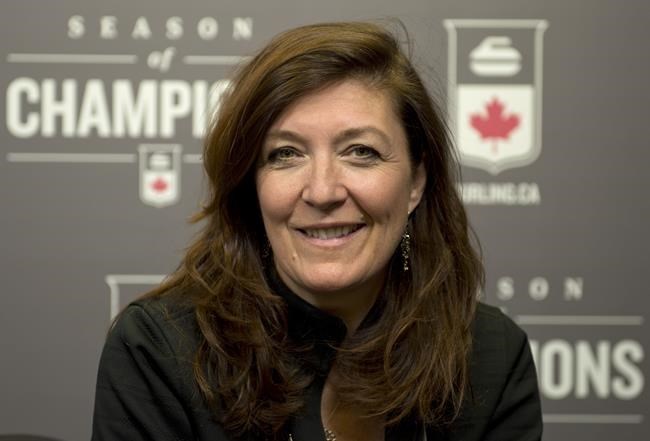The number of women holding leadership positions within Canadian sports is on the rise, with a nine per cent increase in the last five years, according to a report released Friday.
The study, conducted by Canadian Women & Sport, a non-profit organization, reveals women now occupy 43 per cent of board seats in the national sport system, reflecting a trend that underscores organizational efforts toward greater gender diversity.
"We're really excited about the positive trends that we're seeing in these numbers," said Canadian Women & Sport CEO Allison Sandmeyer-Graves. "I think it suggests that organizations have been making this a priority and been taking real action to move this forward."
Women hold 42 per cent of board seats at national sporting organizations (NSO), 46 per cent at multi-sport service organizations (MSO) and 45 per cent at Canadian sport institutes (CSI).
The NSO and CSI numbers are four-per-cent increases, while MSOs saw a three-per-cent decrease from 2022.
Forty per cent of board chairs across the three types of organizations are women. NSOs are at 42 per cent, 36 per cent for MSOs and 29 per cent for CSIs, which saw a 14-per-cent decrease since last year.
In addition, 42 per cent of national chief executive officers are women, with 38 per cent at NSOs, 59 per cent at MSOs and 29 per cent at CSIs. There was a five and three per cent decrease for NSOs and MSOs, with no change happening with the CSIs.
Meanwhile, 51 per cent of national senior staff — directly reporting to the CEO — are women.
"It's not always a linear process in the sense that some numbers go up, occasionally numbers come down," Sandmeyer-Graves said. "We're OK with some of that fluctuation as long as the trends (are) over time moving upwards.
"The reason I say that is because ultimately, at least at the national level, we're talking about quite a small number of organizations. And so, if a few CEOs or executive directors turnover … it can really shift the numbers quite a bit and so we expect that some of these things may fluctuate a little bit."
In a release, Canadian Women & Sport points to the Canadian government's introduction of reforms in 2022 to the Canadian Sport Governance Code that require NSOs to have no more than 60 per cent of any gender on their boards by April 2025.
Currently, 54 per cent of NSOs currently meet the gender equity requirement.
Canadian Women & Sport says while progress has been made, there's more work to be done in achieving further diversity in sports leadership.
Seven per cent of national organizations and 11 per cent of surveyed provincial/territorial organizations still have no women or gender-diverse representation on their boards or only one woman.
"If we look beyond gender, and put an intersectional lens on this where we're looking at the combination of gender, with race, with ability and other forms of identity, that we're just not seeing the kind of progress that we'll want to see in the years ahead," Sandmeyer-Graves said.
"Right now, the place that we're at on those aspects is that organizations are just starting to collect that data, so they haven't actually been able to report on it. And often that means that it's also something that they haven't really been paying attention to."
This report by The Canadian Press was first published Nov. 10, 2023.
The Canadian Press



